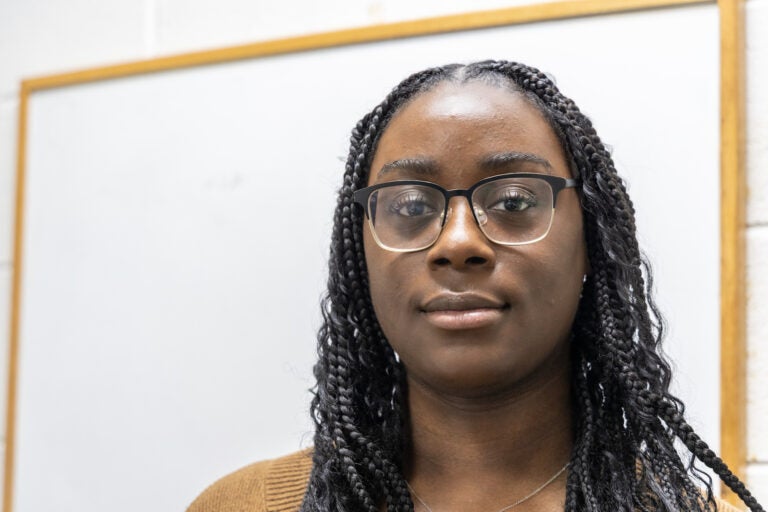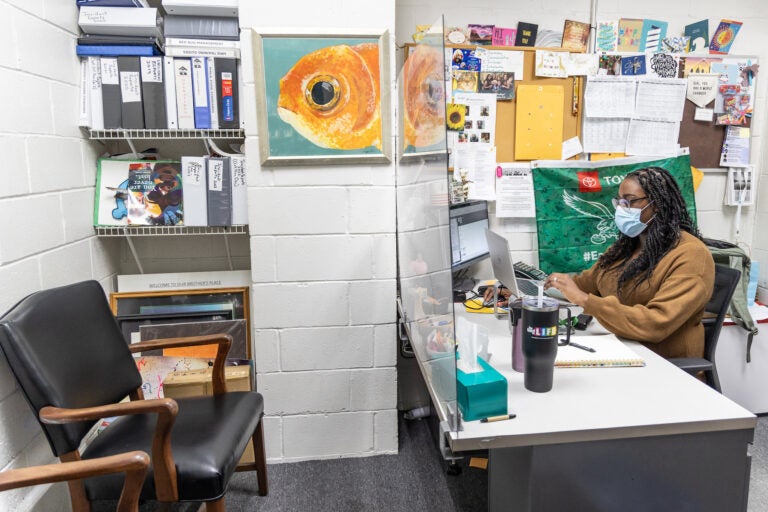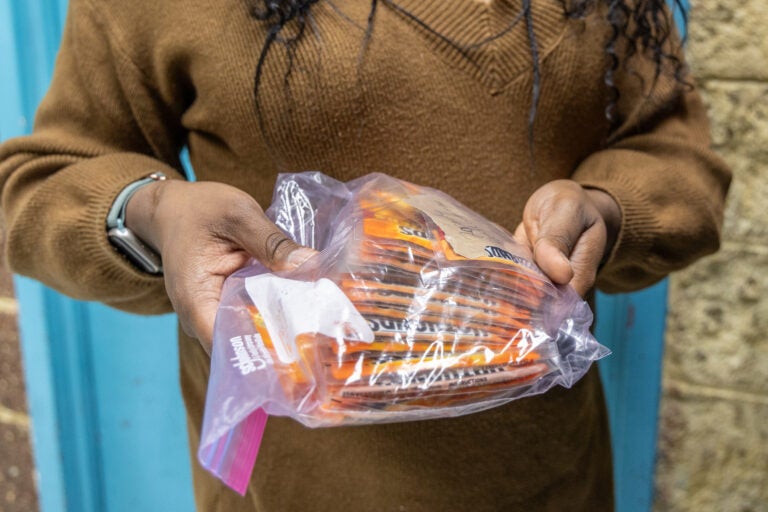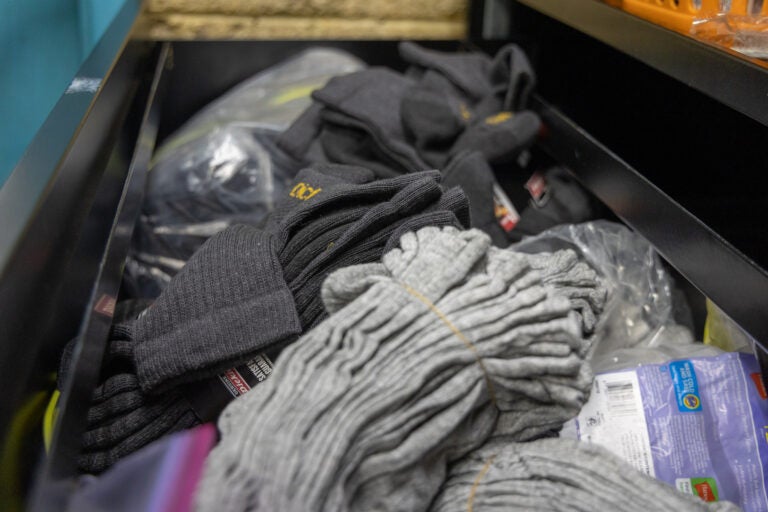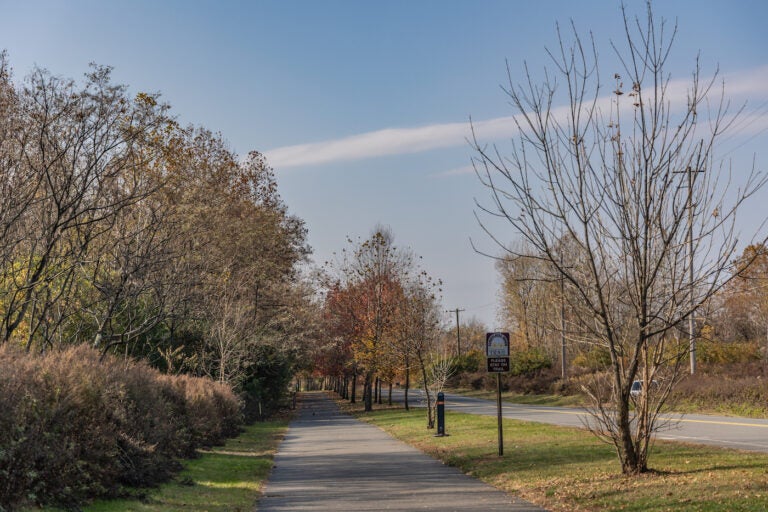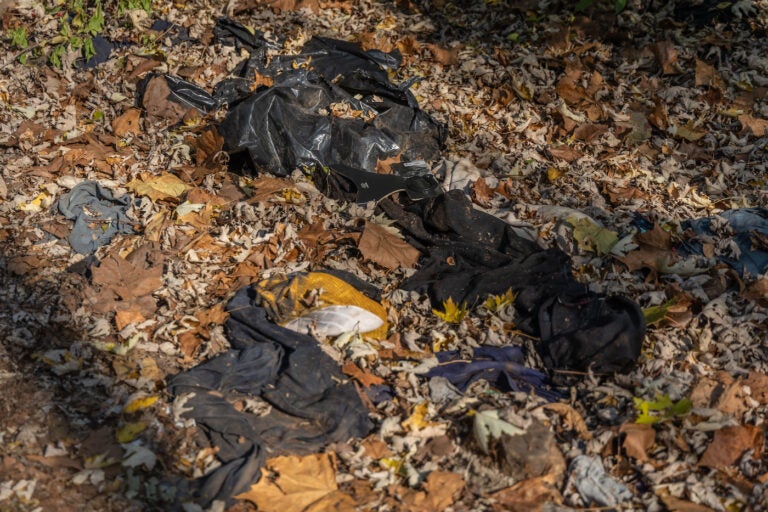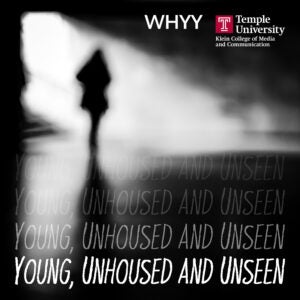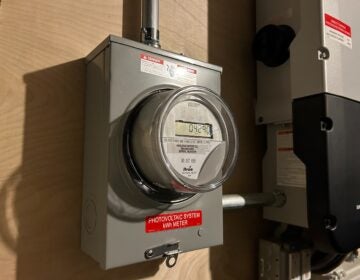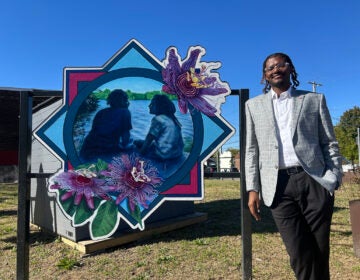Heavy rain, floods, and heat: How climate change makes life tougher for unhoused people in the Philly area
Hundreds of people live outside in the Philly area. Data shows some of the weather conditions they deal with are becoming more extreme.
Listen 5:23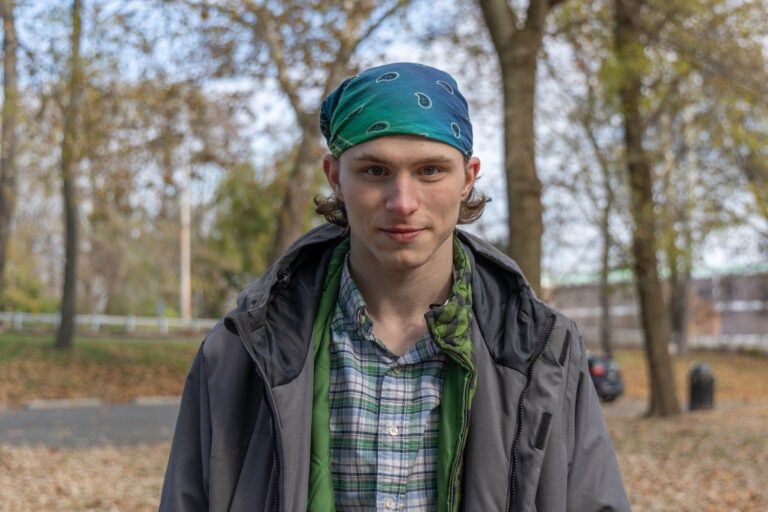
Colt, 19, lost his tent and other belongings during a flood in Pottstown, Pa., in July of 2023. (Kimberly Paynter/WHYY)
This story is from Young, Unhoused and Unseen, a podcast production from WHYY News and Temple University’s Logan Center for Urban Investigative Reporting.
Find it on Apple Podcasts, Spotify, or wherever you get your podcasts.
Colt Steinmetz, 19, remembers wading knee-deep in floodwaters and feeling the burn of stinging nettles as he struggled to help people salvage shopping carts filled with gear.
It was a day in early July. The Schuylkill River had overtopped its banks and flooded a flat, secluded area along the river bank in Pottstown, Pennsylvania, where Steinmetz and several other people experiencing homelessness had set up camp.
As the water crept toward his tent, Steinmetz rushed to save his possessions. He had time to grab his backpack before the water reached it.
“Tents were destroyed,” he said. “All my clothes. My friend’s clothes. All her parents’ stuff, just gone. Her car got destroyed.”
About 15 miles upstream, a weather station in Reading recorded that more than 5 inches of rain — about a month’s worth — had fallen in a single day.
Across the country, human-caused climate change is driving extreme weather, displacing people from their homes and exposing those without housing to new realities. The Northeast region of the United States is already seeing longer and more severe heat waves, as well as more extreme precipitation — which can lead to dangerous flooding — according to the latest National Climate Assessment.
Steinmetz and the more than 1,800 other people living unsheltered in the Philadelphia region are getting a front-row seat to the local impacts of climate change.
Growing up in neighboring Stowe, Steinmetz remembers never feeling “at home” as his family bounced from house to house. He chose to stay in Montgomery County last fall when his mom moved to Florida, because the area feels familiar. He’s been mostly living outside since then, coming of age under brutal conditions that most people can only imagine. He says living outside allows him to think freely. But it’s also psychologically “wearing.”
“It ain’t easy out here, and especially during times like that,” Steinmetz said, referring to the July flood.
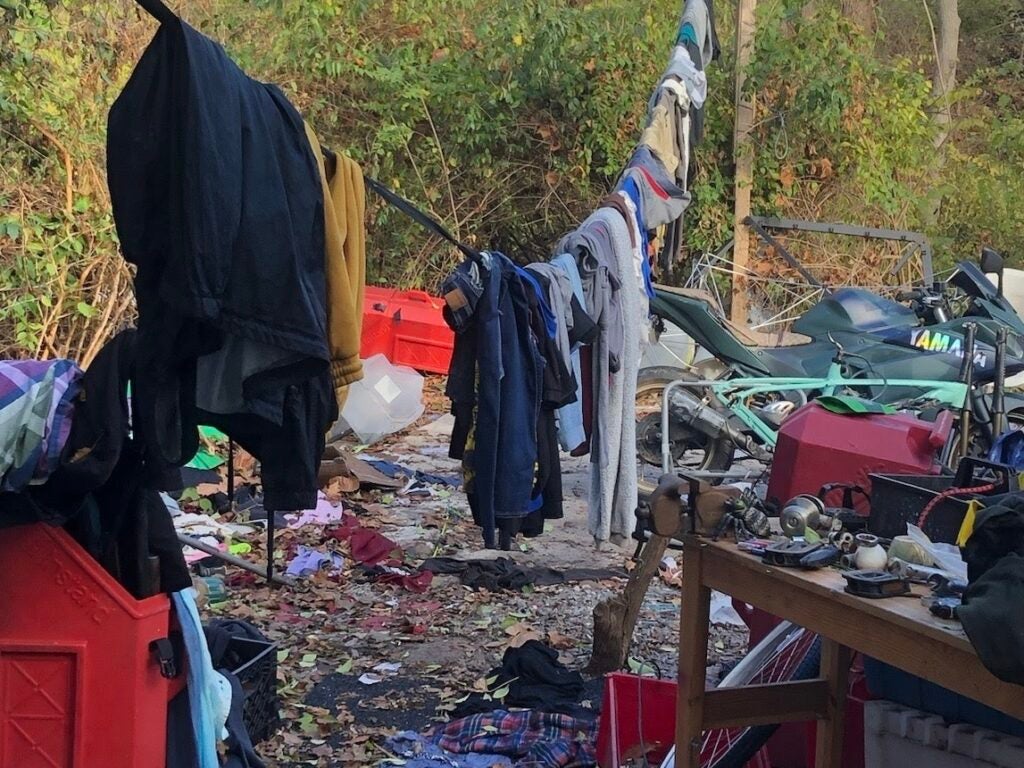
More extreme rain and flooding
The Philadelphia area is getting wetter. The total amount of precipitation that falls in the city each year has trended upward in recent decades, compared to the late 1800s when records began.
“We’re getting about an extra month’s worth of precipitation on average each year,” said Steven Seman, Penn State professor of meteorology and atmospheric science.
People experiencing homelessness, whether they get a bed in a shelter or live outside, have always had to deal with heat, rain, and snow. But climate scientists say this region will get increasingly hotter and wetter, putting an already vulnerable population at greater risk.
“Homelessness is inherently dangerous, and it’s relentlessly hard,” said Mark Boorse, who’s part of a team that does street outreach in Montgomery County with the nonprofit Access Services. “So any change in weather patterns — even small weather patterns — makes that relentlessness worse.”
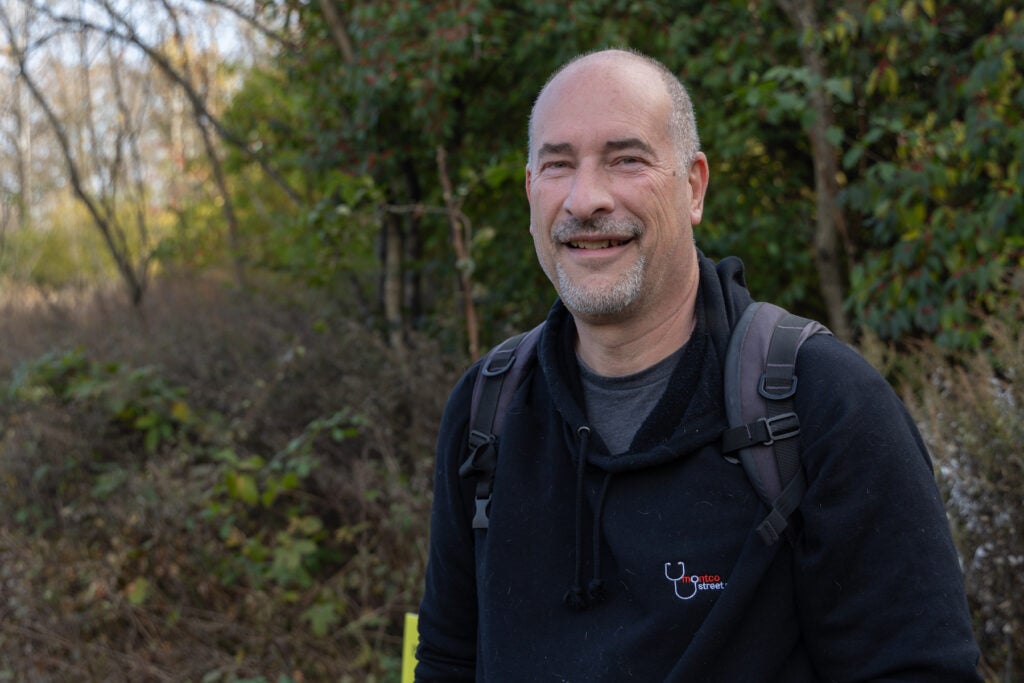
While winters may be more mild, other seasons are getting harder. Extreme precipitation events — where at least 4 inches of precipitation falls in a single day — have occurred much more frequently in Philly over the last five decades than they did in the hundred years before that.
Human-caused climate change is raising the temperature of the air, allowing the atmosphere to hold more moisture.
“When conditions are right for precipitation to occur, you can get more precipitation, because there’s more water vapor available,” Seman said.
Heavy rain is not the only thing raising flood risk in the Philly region. Development creates surfaces that cause water to run off rather than soak into the soil. More parking lots, roads, and roofs can send water rushing downstream, leading to flash floods.
For those without consistent shelter, extreme rain can cause big problems.
Reggie Aiken has experienced this firsthand. He’s a retired construction supervisor and ballroom dance instructor from Pottstown who does not have consistent housing. He stays in winter shelters, hotels, and “under the stars.”
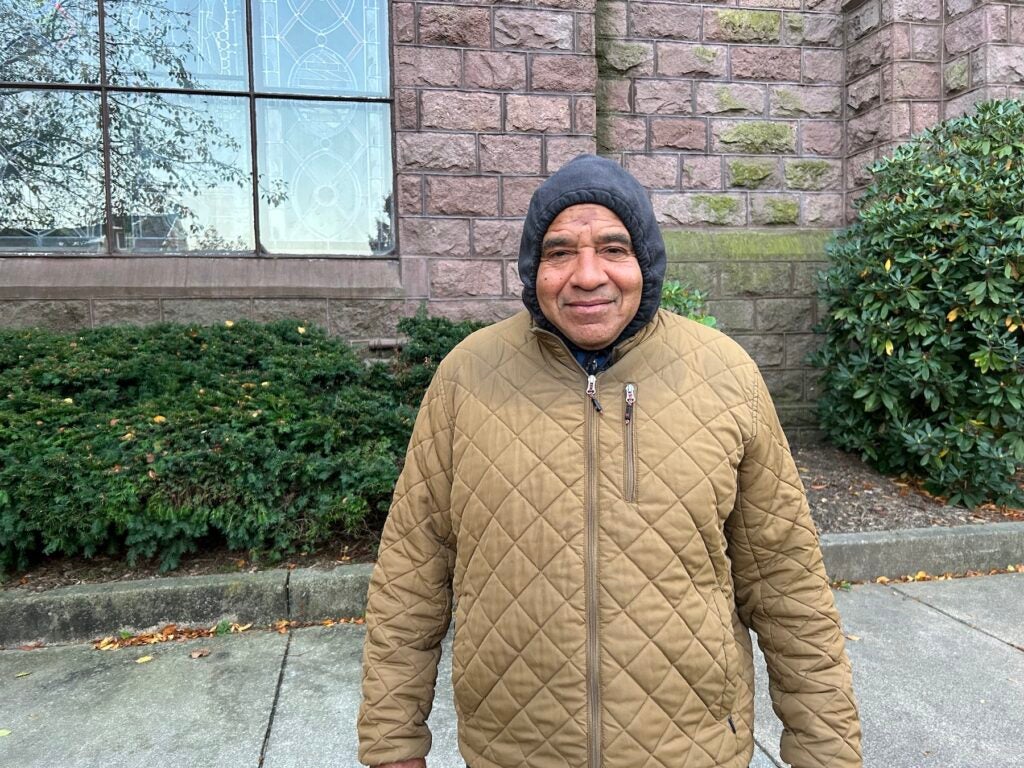
This summer, Aiken was waiting near the Frankford Transportation Center in Northeast Philadelphia to catch the Route 66 bus, when a sprinkle of rain started.
“Usually you have time to pack up and go over to a shelter or something to avoid the storms,” he said.
But this time was different.
“All of a sudden, the wind started blowing and it was kind of like a torrential downpour,” he remembered. “I had to make a decision — you are not going to stand there, you’re gonna run to the station. And by running to the station, I was soaked.”
The belongings he carried with him were drenched, too. In that moment, he committed to staying positive.
“I would say to myself, I’m gonna dry out,” he said. “Two days, I’ll be fine again.”
But wearing wet clothing — particularly socks — for extended periods of time can be dangerous.
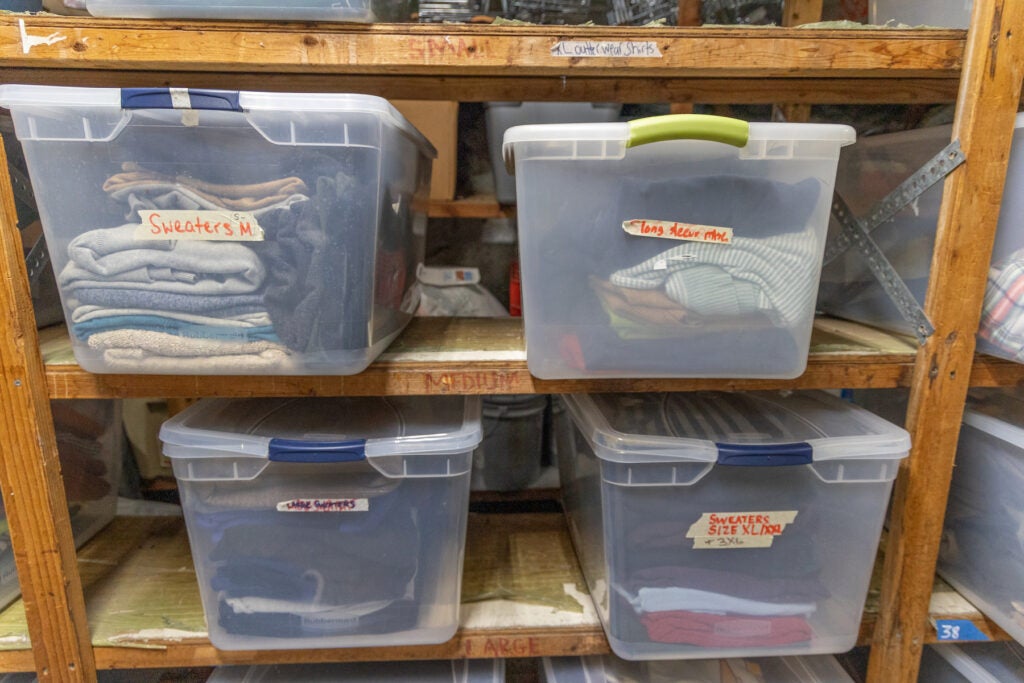
“When you are soaking wet … it doesn’t have to be freezing cold for you to get hypothermia,” said Kharisma Goldston, director of shelter at Bethesda Project in Philly.
At the emergency shelter for men that Goldston runs in North Philly, people sometimes come in soaked, wearing wet socks that they’ve been walking around in for a while. Shelter staff immediately get their clothes washed and dried, she said, and have seen people’s feet in such “concerning condition” that they’ve sent them to the hospital. Staff have even seen cases of gangrene, Goldston said.
“Wet socks and old shoes do not make for a fun mix,” she said. “If you already have diabetes, you can’t risk a small cut on your foot. That could easily turn significant, and you can lose a toe.”
When climate-related events cause homelessness
Flooding not only endangers people who are already unhoused — it can also cause homelessness.
In 2021, the remnants of Hurricane Ida displaced hundreds of people in the Philly suburbs. The storm destroyed dozens of homes and damaged hundreds more.
More than 120 units of reasonably affordable housing were lost in Norristown alone, and have not yet been replaced, according to a county spokesperson. Less than a year after the storm hit, a 50-bed shelter in town closed, amid rising rents.
“Those were the factors that, put together, contributed to a spike [in homelessness] that’s not gone away yet,” said Boorse, from Access Services. “We effectively doubled the number of people that were experiencing short-term homelessness [in Montgomery County] in that immediate moment.”
Some families displaced by Ida stayed in hotels for up to a year, Boorse said. Most have now gotten back on their feet, but they required help to do so.
“Our initial thought was, wow, the system that we’re participating in cannot possibly absorb this level of catastrophe,” he said. “The system responded pretty well … but [had a] ripple effect of straining the entire system. … We lost housing that we aren’t getting back.”
Worsening summer heat
It’s not just rain, flooding, and cold. People like Aiken have to deal with heat as well.
“Extreme heat,” Aiken said. “It’s still dangerous.”
Philadelphia now sees, on average, over a dozen more days that top 90 degrees each year than it did in the late 1800s, and nighttime temperatures are not cooling off as much as they used to. These trends are a result of both climate change and urban development, said Seman, the Penn State professor.
“The warm nights are kind of a sneaky threat,” Seman said. “The cooling night is the time for the body to recuperate from the heat of the day.”
Aiken remembers making the trek from downtown Pottstown to a nearby Walmart on a hot day a few summers ago. It was about a 35-minute walk — one he thought he could make. But he started to feel sick.
“I was overcome with heat,” Aiken said. “I was dizzy for a couple days. It didn’t go away. … For three days, I could feel like a grogginess from the heat. By that, I learned to respect the heat.”
In summer months, Aiken tries to make sure he has access to air conditioning during the day. He often spends time at a church in Pottstown that operates an indoor learning center five days a week, with air conditioning in the summer and heat in the winter.
“I see a lot of the homeless that endure the heat,” he said. “And that takes a toll, no matter what age.”
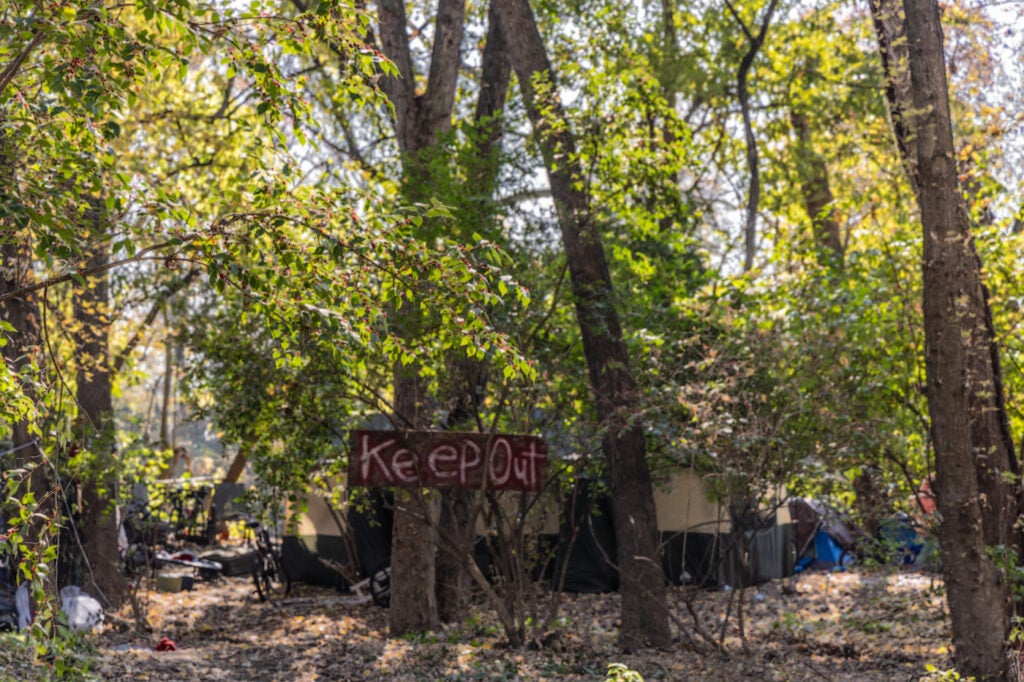
In Philly, 24-year-old Kiah, who slept outside on and off for five years before recently getting into a housing program for young adults, said summer heat makes his asthma worse. He uses an inhaler, but has had to go to the hospital to use a nebulizer or get steroids.
“For me, it’s my breathing more so than the temperature,” Kiah said. “Once it gets too hot or too cold, then it triggers asthma or allergies and things like that.”
When the heat index is forecast to reach 95 degrees for three consecutive days, the city of Philadelphia declares a Code Red, activating extra emergency shelter beds. The declaration often coincides with an expansion of hours at libraries, which act as cooling centers.
The flip side to warming temperatures is that winters in the Philly area are getting more mild.
David Holloman, interim executive director of the Philadelphia Office of Homeless Services, said the city has declared fewer Code Blues in recent years. Long-term weather data for Philadelphia shows that the frequency of temperatures that dip below 20 degrees Fahrenheit has trended down slightly since the late 1800s.
But this doesn’t mean it’s safe to live outside during the winter. Just last year, 29 people in Philadelphia died from exposure to cold, according to data from the city’s Department of Public Health.
“There have been fewer outbreaks of really bone-chilling cold air in the Philadelphia area,” Seman said. “[But] run-of-the-mill winter chill is still around.”
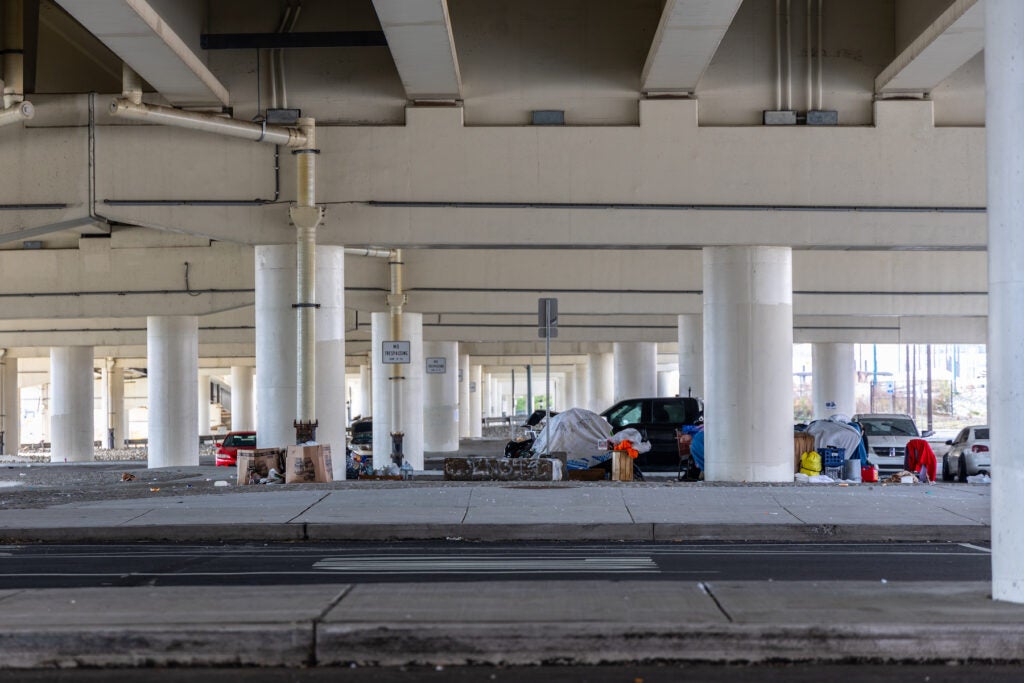
Hundreds of people exposed to extreme weather
The exposure of unhoused people to climate-driven extreme weather is just another example of how a warming planet disproportionately impacts already marginalized communities.
“The most vulnerable [to the effects of climate change] will be the people who are on the streets either all the time or a large chunk of their time,” said Mariya Bezgrebelna, a research analyst at the Centre for Addiction and Mental Health in Toronto, who has studied the intersection of climate and homelessness at the global scale.
This year’s Point in Time counts of people experiencing homelessness documented over 700 people living unsheltered in Philadelphia, more than 200 in Bucks, Montgomery, Chester, and Delaware counties, close to 200 in the state of Delaware, and over 700 across nine counties in southern New Jersey. These counts are generally considered to be underestimates.
Across the country, Black people experience homelessness at a much higher rate than white people, according to the National Alliance to End Homelessness. That’s also the case in Philadelphia, where 68% of the people the city documented experiencing homelessness early this year were Black, compared to just over 40% of the city’s overall population in 2022. The city has also found that unhoused youth are disproportionately LGBTQ.
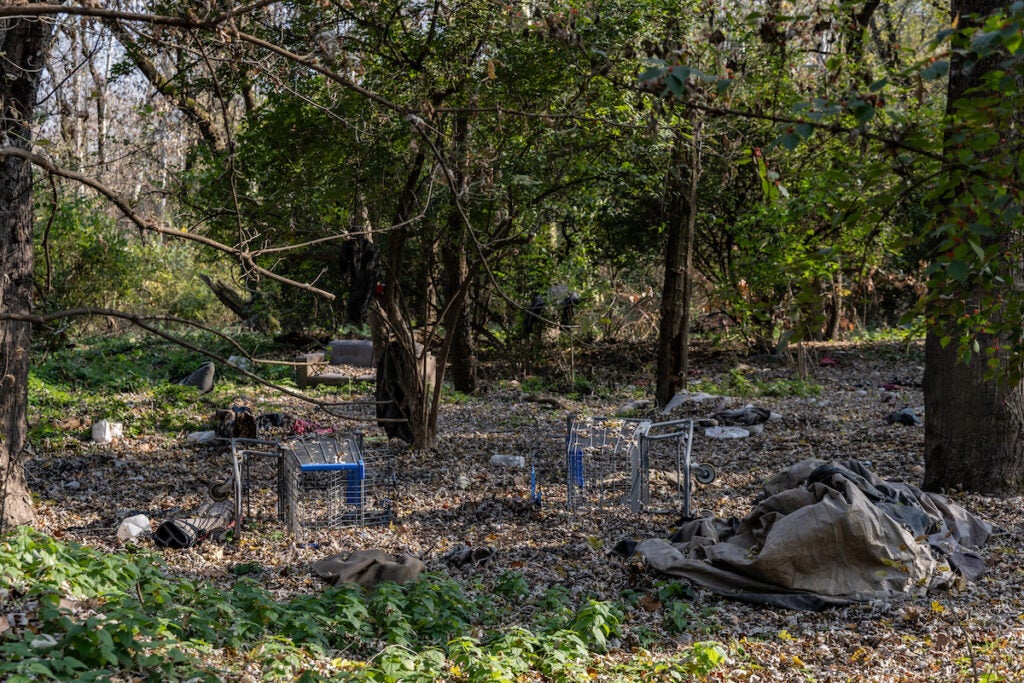
Young people can face unique barriers when it comes to shelter.
“Youth, they just don’t want to go to shelters — for a variety of reasons,” said Ericka Brown-Boulware, street outreach supervisor at Valley Youth House in Philadelphia. Her team provides young people living outside with food, clothing, socks, tents, and other supplies, and connects them with shelter and resources. “Some grew up in systems and so they are against institutions because they feel very institutionalized, or just experiences with shelters — bad treatment or shelters not being suitable for living.”
Insufficient emergency shelter space is a persistent issue, said Candice Player, vice president of outreach and special initiatives at Project HOME in Philadelphia. The organization runs a 24/7 hotline and street outreach to try to connect people experiencing homelessness in Philly with shelter and other services.
“When people are repeatedly turned away from shelter, they stop trying,” Player said.
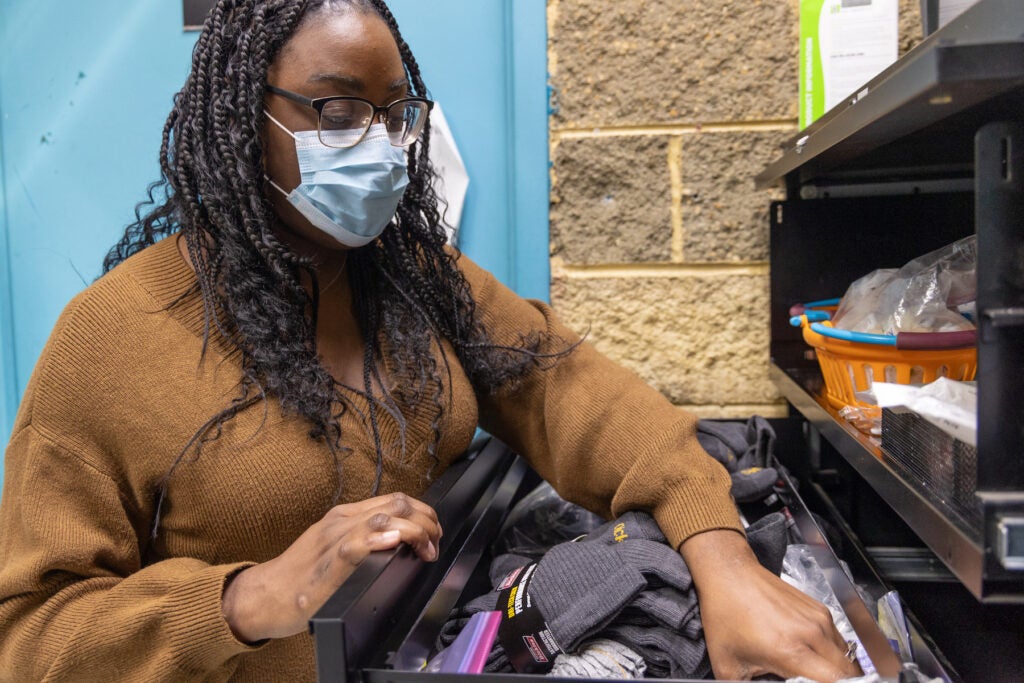
In Pottstown, where 19-year-old Colt Steinmetz lives, the only shelter with overnight beds for individuals is a seasonal winter shelter open just six months of the year. The shelter plans to move to a permanent location and open all year round, but has faced delays obtaining title to the property where it would be built.
Steinmetz has been unhoused since last fall, and prefers to avoid the shelter when he can.
But this summer’s flood was one of the hardest things he’s experienced, he said. He remembers feeling powerless to help his friend.
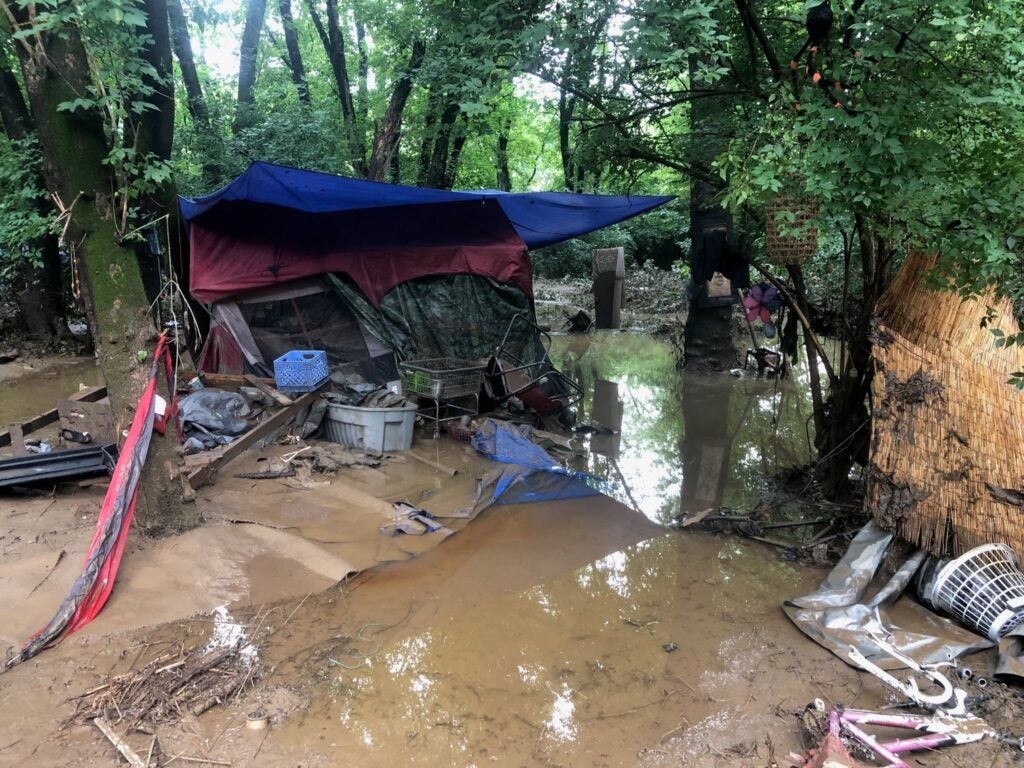
Living outside, Steinmetz has focused on his relationships and on what love looks like in the absence of material wealth. Everybody knows everybody in the encampment, he said. And during the flood, those bonds showed.
“The only choice I had was to sit and watch or just leave,” Steinmetz said. “But I chose to stand by and watch, because I wouldn’t want my friend to just ditch me. I’d rather them stick around and at least cheer me on or try to cheer me up. I wouldn’t want anyone to be alone.”
WHYY is your source for fact-based, in-depth journalism and information. As a nonprofit organization, we rely on financial support from readers like you. Please give today.



